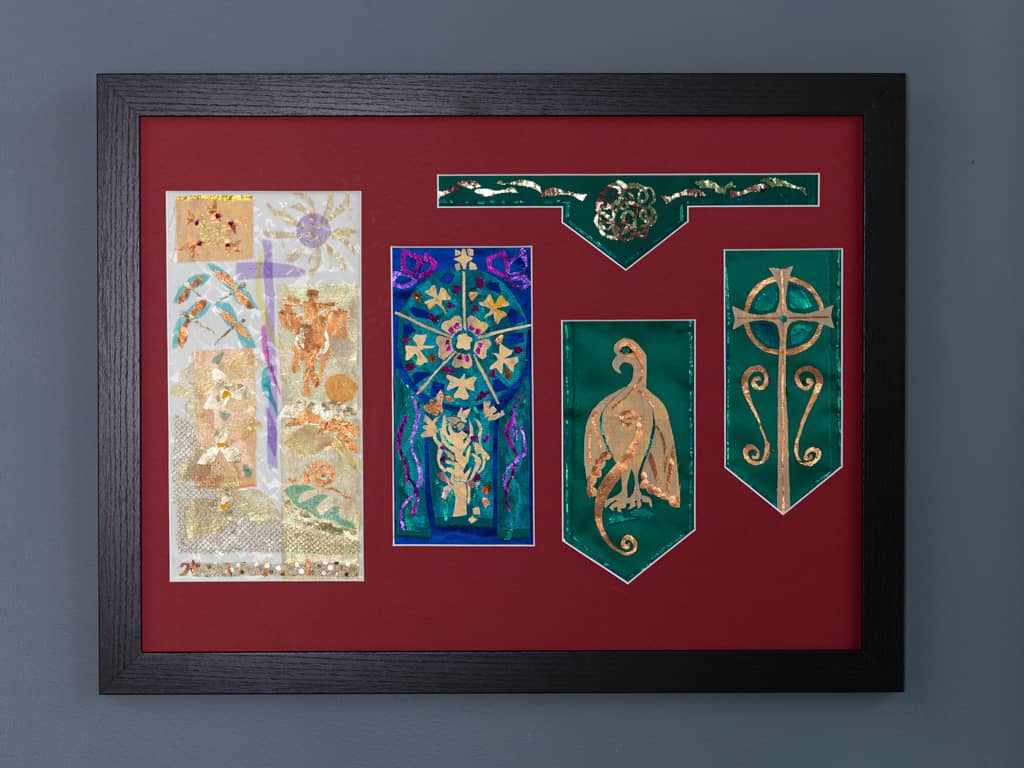
Mae Runions
St.Philip's Anglican Church
Vancouver, B.C.
Left to Right:
1. Creation-Celebration Processional Banner, 2000.
This banner was commissioned by Sally Clinton, in memory of her late husband Alf, and in celebration of his life and all their children and grandchildren; it is given on the anniversary of the 75th anniversary of St. Philip’s Church. It is to be used for processions at weddings and special occasions. This hanging is about how the Celebration of Creation is worked out in the Clinton family. Alf Clinton was an educator, an art teacher, a West Coast landscape painter, and a naturalist. He loved riding horses, had a stable, and trained children.
The images used are universal – birds (hummingbirds), insects (dragonflies), flowers (trillium), mountains and sea (and sea life), animals (a horse) and a child. Also, music. In all of this life and created order, the Cross, Christ’s presence is central and thus part of this expression of worship.
2. Rose Window Processional Banner, 1998.
This banner was commissioned by Kathie Overton in thanksgiving for her husband, parents, children and grandchildren; it is given on the 73rd anniversary of St. Philip’s Church for use in the season following Pentecost (green). The rose window motif is symbolic of God’s love and unity; placing a circle in a square unites the infinite with the finite, God in Creation and Incarnation. The garden carries on the theme of creation, central to this season of the church year, and reflects the Overton’s love of gardens. Kathie honours the memory of her English mother with the Yorkshire rose and Irish father with shamrocks.
3. Set of 3 Altar Hangings, 2006.
These pieces were commissioned by Thelma Stephens and family in memory of her late husband, the Venerable William Stephens, a former minister in this parish. Celtic designs were requested to reflect the Irish heritage of the family. Green is the liturgical color for Trinity Season, the long season after Pentecost Sunday which goes on until Advent.
The Eagle is often used in Celtic art; it is a symbol of highest inspiration and in particular represents the inspiration of the gospels. Lecterns, from which the gospels are read were often given the form of an eagle. In this case the eagle hangs on the lectern in fabric. The second antependium was to hang on the preaching pulpit. There is a Celtic cross here, with a circle around the arms, a symbol of God, without beginning and without end. The intertwining Celtic knotwork on the altar frontal is symbolic of God and the interconnectedness of all creation.
©MaeRunions
